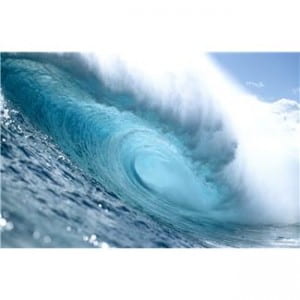 By Tina Casey; Published July 15, 2013, TriplePundit.com
By Tina Casey; Published July 15, 2013, TriplePundit.com
Recently, some of the top business journalists in the U.S. went on record asserting that climate change denial is a form of political posturing that is not worthy of discussion in serious reporting on economic issues. If that doesn’t lay the whole climate change denial thing to rest, then hopefully this will: The Weather Company has just endorsed the BICEP (Business for Innovative Climate and Energy Policy) Climate Declaration, which acknowledges the scientific consensus on climate change.
As the owner of The Weather Channel and related weather media platforms, The Weather Company already reaches a broad audience with reality-based information, so it’s in a good position to help bridge the political divide…or is it?
Communicating about climate science
Let’s start with the current state of affairs, which is the information gulf separating climate scientists and the lay public. Politics aside, a large part of the problem has to do with the nature of communication accurately about science in general. In many cases, it is impossible to reduce science into sound bites that can be absorbed during the course of daily life, especially in competition with the flood of other news in a media-saturated world.
Climate change poses an especially great communications challenge, because the hard evidence accumulates over long periods of time and cannot be seen with the naked eye, except in abstract form of a chart or graph.
The Weather Company and climate change
Public awareness is beginning to reach into new territory, even without the help of The Weather Company. In the past couple of years, more of the general population has had the misfortune to experience phenomena linked to climate change, namely, more frequent and severe storms, droughts, floods, and wildfires. That also includes people who live in areas that have not experienced extreme destruction in a generation or more, and now find their normally “safe” environment undergoing new threats.
In that regard, The Weather Company could help build these individual experiences into a tipping point. To see why, let’s go back a few months ago, when artists and researcher Nickolay Lamm used data from the non-profit organization Climate Central to create a series of arresting before -and-after images of East Coast landmarks affected by sea level rise. He had this to say about the project, which he called Sea Level Rise in Real Life.
“I’m surprised at the amount of people calling this a ‘liberal agenda.’ When I was making these illustrations, I based them off sea level rise maps from Climate Central, not someone’s wild imagination.”
Now Lamm has added a West Coast version to the project, and The Weather Company has picked up on it. In a July 12 article on weather.com, The Weather Channel posted Lamm’s West Cost images and video along with links to the East Coast version and to Climate Central.
The article also referenced NOAA and National Geographic, so consider that thrgough The Weather Company, reality-baseed information from Climate Central is now associated with some of the most trusted (and non-political) names in science information, all wrapped around a series of truly stunning, graphic images of what some of the most familiar icons in the U.S. landscape would look like under water.
For more of the article go <HERE>
